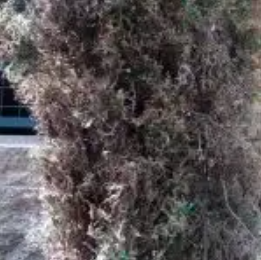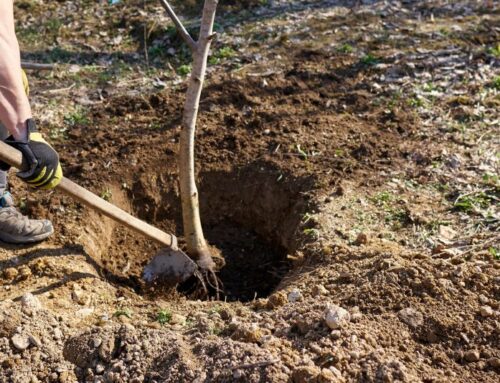I visited a client’s property this week to inspect a row of their Italian Cypresses, Cupressus sempervirens, that aren’t looking well. I’ve seen this issue more than a few times, so I figured I’d write about it to help anyone else wondering about their “Tiny Towers”.



Who to blame?
Italian Cypress trees have relatively few disease issues. Most common among them are cypress canker, root rot, bag worms and spider mites. I looked for the symptoms each of these would have.
Cypress canker shows signs of oozing sap and discolored bark; Root rot shows symptoms of downward curling and wilting of leaves; Bag worms leave small cocoons in the needles–all of which I did not see on these trees. Which leaves spider mites as the culprit, their extensive webbing throughout the crown being a pretty good sign of their presence. You can also hold a white paper beneath a branch, flick the needles and see if any spider mites fall onto the paper.
Mites cause damage by sucking cell contents from the needles. A small number of mites usually isn’t reason for concern, but very high populations can damage the trees. At first, the damage shows up as a stippling of light dots on the leaves; sometimes the leaves take on a bronze color. As feeding continues, the leaves turn yellowish or reddish and drop off. The effect and decline that spider mites have on these trees are unfortunately worsened during hot, dry periods. It is a possibility that the Cypress that are experiencing the worst of the symptoms are in more direct sunlight, and/or not getting enough water than the rest.
Ok, so now what?
If we were to treat the spider mite infestation with insecticide, then it would be possible that the insecticide would inadvertently kill their natural predators and thus multiply the spider mite population even more…definitely not what we want. Actually, an effective way to control for the mites is to use a good ol’ fashion hose and spray down the trees with water to break up the webs and wash off the dust. Dust and webs act as a barrier for many of the spider mites’ insect predators and inhibits their ability to hunt and prey upon them. Just be careful not to use too powerful of a stream so the branches aren’t damaged.
I also recommended a soil drench of a macro/micro nutrient formula that we use that will help improve rooting (thus more water uptake) and boost the health of the tree to help naturally the defend themselves from the pests.
Well that’s it! I hope you enjoyed today’s lesson on mites 😉





